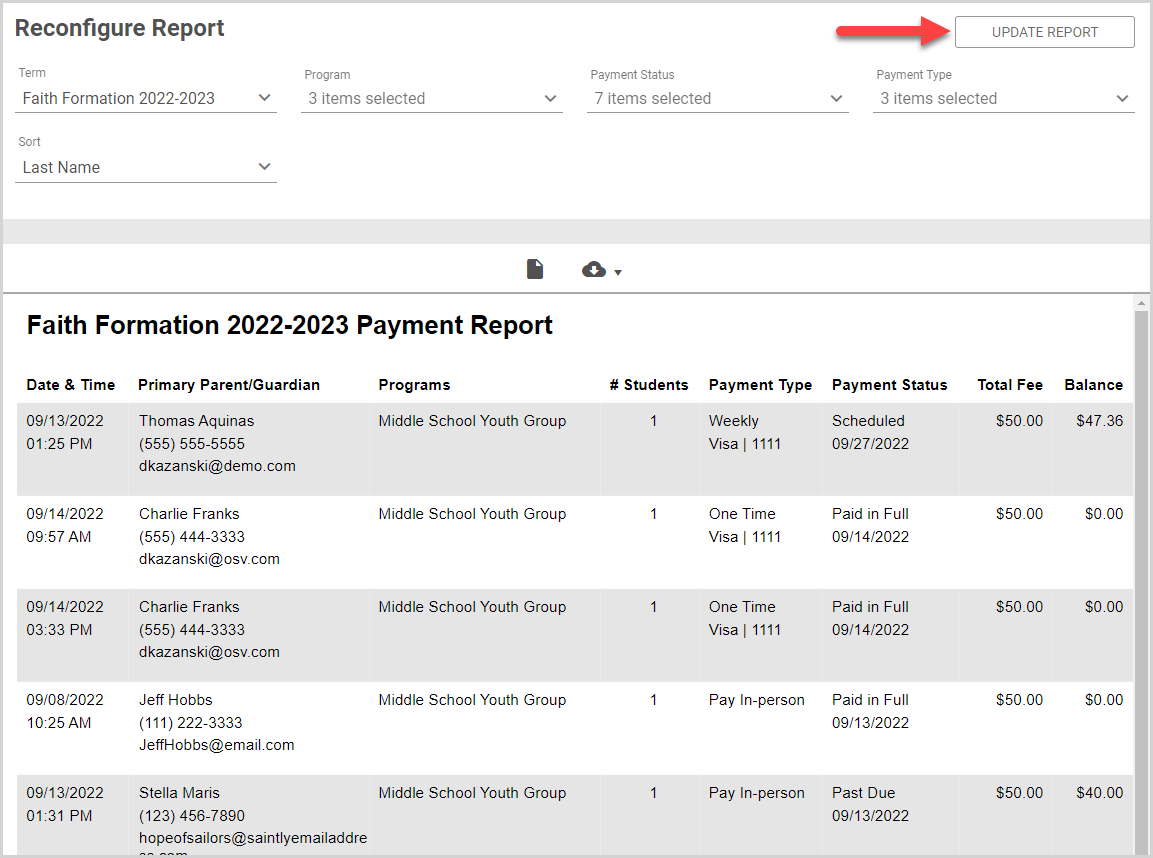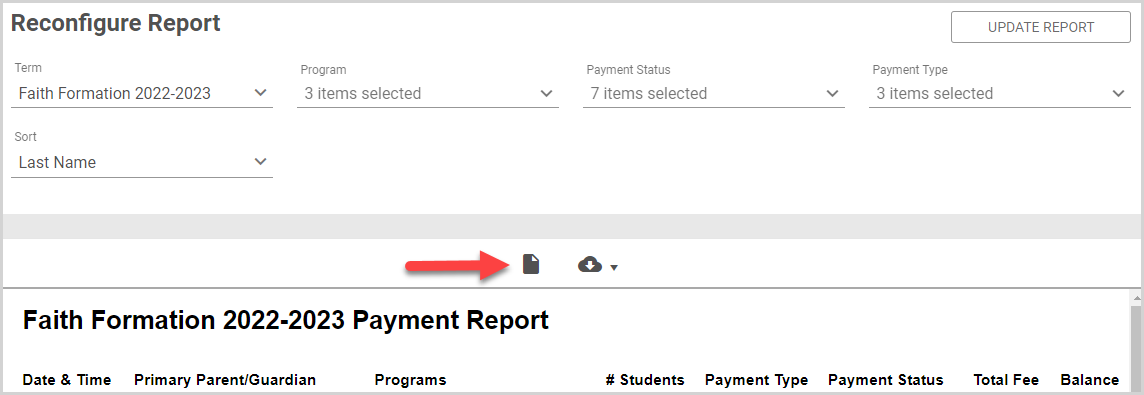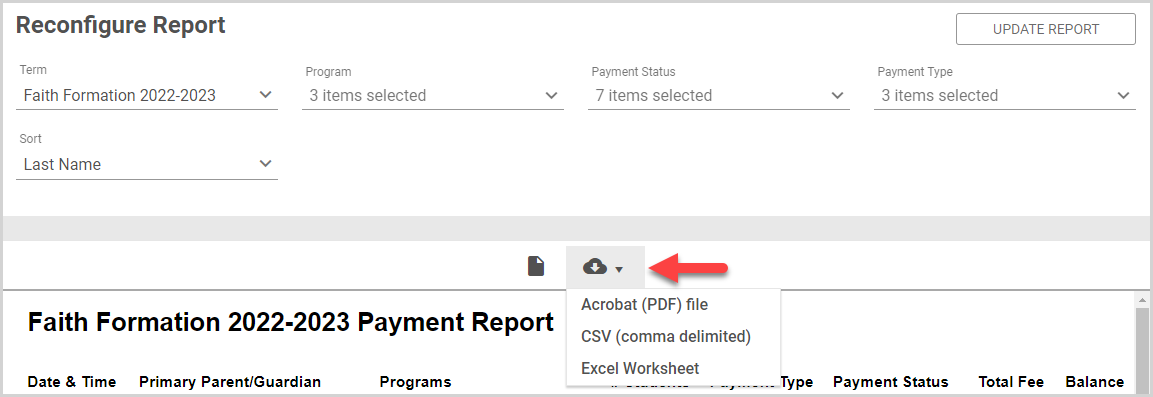Religious Education Payment Report
This article provides steps and reasons to run a Religious Education Payment Report.
A Religious Education administrator might run a payment report for several reasons related to managing programs, tracking fees, and ensuring financial transparency within the education department.
Here are some key reasons to run an RE payment report:
Tracking Tuition Fees: Many Religious Education programs charge fees for classes, events, or materials. The administrator would run a payment report to keep track of which families have paid, how much they've contributed, and if any payments are overdue.
Budget Management: The RE administrator might need to ensure that the funds collected for the program align with the budget, especially if funds are used for supplies, books, guest speakers, or other program-related expenses. A payment report helps verify the inflow of funds.
Confirmation of Enrollment: In many RE programs, especially for sacraments like First Communion or Confirmation, the RE administrator may need to verify that payments were made in order to confirm participation in the program.
Communication with Families: If there are discrepancies or overdue payments, the RE administrator can use the RE payment report to communicate with families about any outstanding balances or payment arrangements.
Complete the following steps to run a Religious Education payment report:
1. From Religious Education select Reporting from the main-menu.
2. Click on the drop-down arrow to select Payment Report as the Report Type from the menu.

3. Click on the drop-down arrow and select the desired Term from the menu.

4. Search for and select the desired Program or Programs. Check the top box to select all programs within the term.

5. Select the Payment Status.

Selecting the top check box selects all programs within the term. More than one status may be selected:
-
Fully Paid - the required payment has been fully paid (balance is zero).
-
Not Paid - the full balance remains on the required payment (e.g., a $50 balance remains on a $50 fee), the payment due date has not passed, and there is no scheduled online payment plan.
-
Over Paid - the paid amount is greater than the fee for the term.
-
Paid - a partial payment has been made toward the required payment (e.g., a $20 balance remains on a $50 fee), the payment due date has not passed, and there is no scheduled online payment plan.
-
Past Due - The payment due date has passed, there is no scheduled online payment plan, and a balance remains on the required payment.
-
Payment Not Required - no payment is required.
- Scheduled - There is a balance remaining on the required payment, and a scheduled online payment plan has been set up.
6. Select Payment Type. More than one Payment Type may be selected: Online, Pay In-Person, and Payment Not Required.

7. Select a category to Sort by: Last Name, Payment Status, or Registration Date.

8. Click Run Report to process.

The report populates, listing registrations that match the selected criteria. If you need to run the report again for different criteria, the report can be reconfigured and updated by selecting new criteria in the fields and clicking Update Report.

You can toggle the print preview on/off by clicking page icon.
You can Export the report by clicking the cloud icon and selecting the type of file you want to use: PDF, CSV, or Excel Worksheet.
Note* The video is best viewed at full screen. Press Esc on your keyboard when you are finished viewing.
























